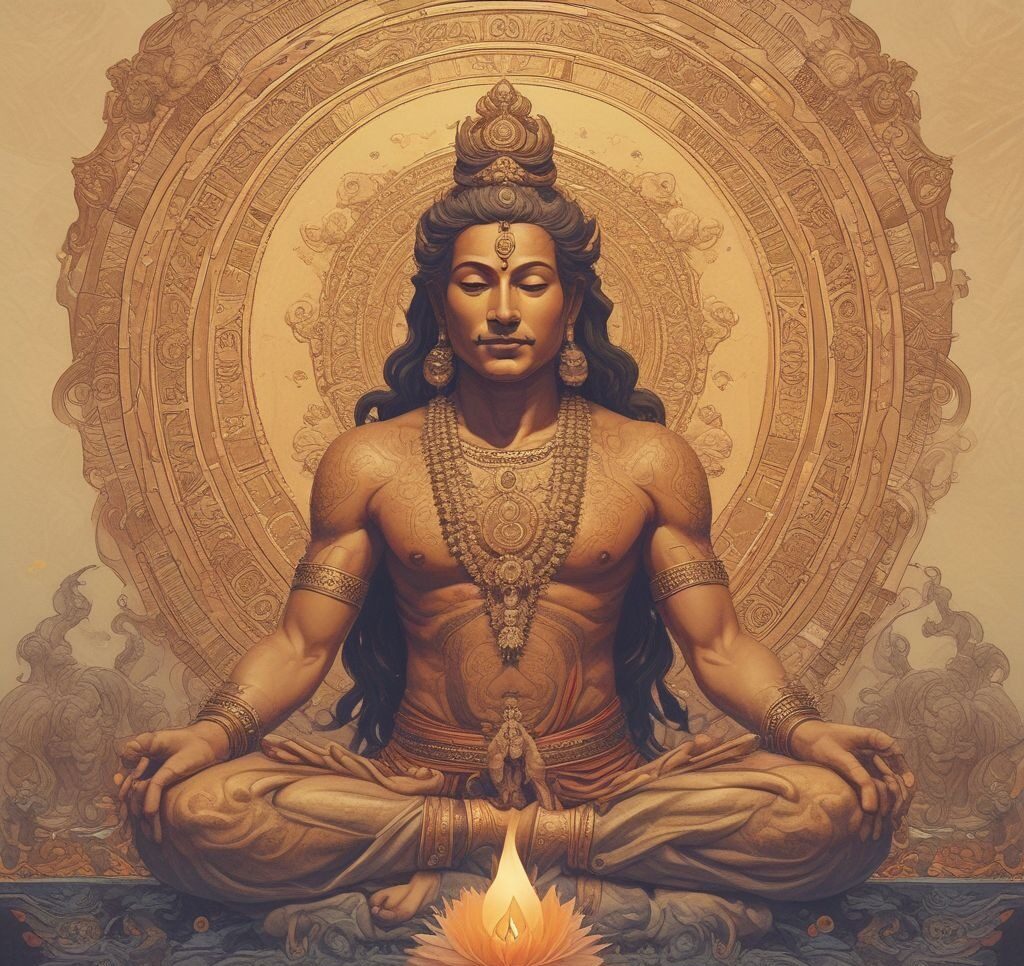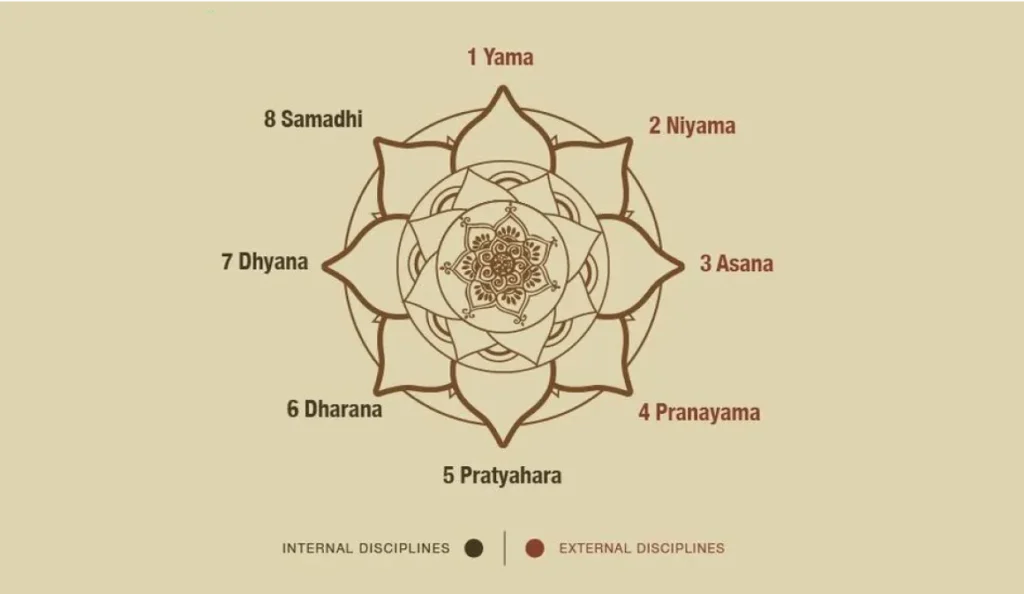The Timeless Wisdom of Patanjali: Unveiling the Yoga Sutras
Known for its ageless wisdom that endures throughout millennia, the Patanjali Yoga Sutras are a fundamental literature in yoga practice. These 196 aphorisms, which the sage Patanjali composed somewhere about 400 CE, offer a thorough manual for obtaining self-realization, spiritual development, and mental clarity. Explore the fundamental ideas, organization, and spiritual inspiration of the Yoga Sutras as we dig into their core.
The Structure of the Yoga Sutras
The Yoga Sutras are divided into four chapters, each focusing on different aspects of the practice and philosophy of yoga:
1- Samadhi Pada (Chapter on Contemplation)
2- Sadhana Pada (Chapter on Practice)
3- Vibhuti Pada (Chapter on Powers and Accomplishments)
4- Kaivalya Pada (Chapter on Liberation)
Samadhi Pada: The Path to Enlightenment
Enlightenment, or Samadhi, is the ultimate objective of yoga, and the first chapter, Samadhi Pada, sets the groundwork for comprehending the nature of the mind. Patanjali presents the idea of Chitta Vritti, or mental fluctuations, highlighting the significance of Citta Vritti Nirodha or stopping these oscillations.
Key Sutras:
- Yoga Chitta Vritti Nirodha (Yoga is the cessation of the fluctuations of the mind):
- This fundamental sutra encapsulates the essence of yoga, highlighting the goal of achieving a still and focused mind.
- Yoga Chitta Vritti Nirodha (Yoga is the cessation of the fluctuations of the mind):
- This fundamental sutra encapsulates the essence of yoga, highlighting the goal of achieving a still and focused mind.
- Tada Drashtuh Svarupe Avasthanam (Then the seer abides in its true nature):
- When the mind is free from distractions, the practitioner can realize their true self.
Sadhana Pada: The Practice of Yoga
Sadhana Pada describes the methods for achieving spiritual development and mental tranquility. This chapter provides an overview of Ashtanga Yoga, often known as the Eight Limbs of Yoga, which offers a thorough framework for leading a virtuous and orderly life.
The Eight Limbs of Yoga:
1. Yama (Ethical Disciplines) is ahimsa (nonviolence), Satya (truthfulness), Asteya (no stealing), Brahmacharya (celibacy or moderation), and Aparigraha (non-possessiveness).
2. Niyama (Personal Observances): Saucha (cleanliness), Santosha (contentment), Tapas (discipline), Svadhyaya (self-study), and Ishvara Pranidhana (surrender to a higher power).
3. Asana (Physical Postures): The practice of physical postures to develop strength, flexibility, and balance.
4. Pranayama (Breath Control): Techniques to regulate the breath and control the flow of prana (life force).
5. Pratyahara (Withdrawal of the Senses): Turning the senses inward reduces distractions and focuses the mind.
6. Dharana (Concentration): Developing the ability to focus on a single point.
7. Dhyana (Meditation): Sustained concentration leading to a meditative state.
8. Samadhi (Enlightenment): The ultimate state of consciousness, where the practitioner experiences unity with the divine.
Vibhuti Pada: The Powers and Accomplishments
The third chapter, Vibhuti Pada, examines the supernatural abilities, or Siddhis, that may be obtained with devoted effort. Although these abilities might be seductive, Patanjali warns against getting attached to them since they can divert attention from the ultimate objective of emancipation.
Key Aspects:
- Samyama: Siddhis are formed by combining the practices of Dharana (concentration), Dhyana (meditation), and Samadhi (enlightenment) on a single object or thought.
- Detachment is retaining: a sense of distancing oneself from one’s abilities and successes to prevent ego expansion and keep one’s attention on the road to freedom.
Kaivalya Pada: The Liberation
The last chapter, Kaivalya Pada, explores the nature of liberation and the breakdown of the ego. Patanjali narrates the self’s path from ignorance and suffering to ultimate liberation and enlightenment.
Key Sutras:
- Tasya Hetur Avidya (The cause of suffering is ignorance): Patanjali describes ignorance as the primary source of all suffering, highlighting the significance of self-awareness and awareness.
- Kaivalya (Liberation): is the ultimate liberation and self-realization, in which the practitioner feels oneness with universal awareness and rises above the ego’s confines.
The Relevance of Patanjali’s Yoga Sutras Today
On their path to spiritual development and self-discovery, current practitioners find inspiration and guidance in Patanjali’s Yoga Sutras. Embrace the knowledge of the Yoga Sutras in your everyday practice in the following ways:
- Mindfulness and Meditation: To calm mental waves and develop inner tranquility, engage in mindfulness and meditation practices.
- Ethical Living: Follow the Yamas and Niyamas and incorporate moral precepts and private observances into your day-to-day activities.
- Consistent Practice: To cultivate mental, physical, and spiritual discipline, set aside time for frequent asana, pranayama, and meditation practice.
- Self-Reflection: To promote personal development and self-awareness, practice self-study, or Svadhyaya, to understand your ideas, deeds, and motives.
- Detachment and Focus: Avoid outside distractions and petty victories while concentrating on the more important goal of your exercise.
Conclusion
The Patanjali Yoga Sutras provide a timeless and profound manual for attaining spiritual development, self-realization, and mental clarity. Through comprehending and incorporating the knowledge of the Yoga Sutras into your existence, you can set off on a profound path that leads to inner tranquility, equilibrium, and realization. Accept Patanjali’s guidance, and you will find your limitless potential.







